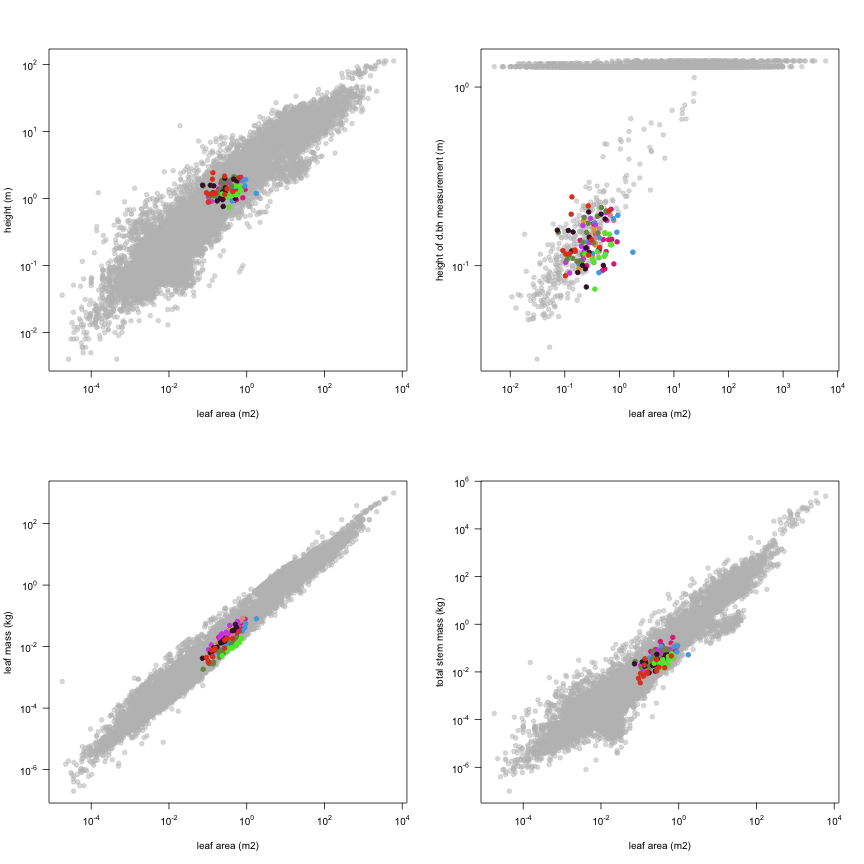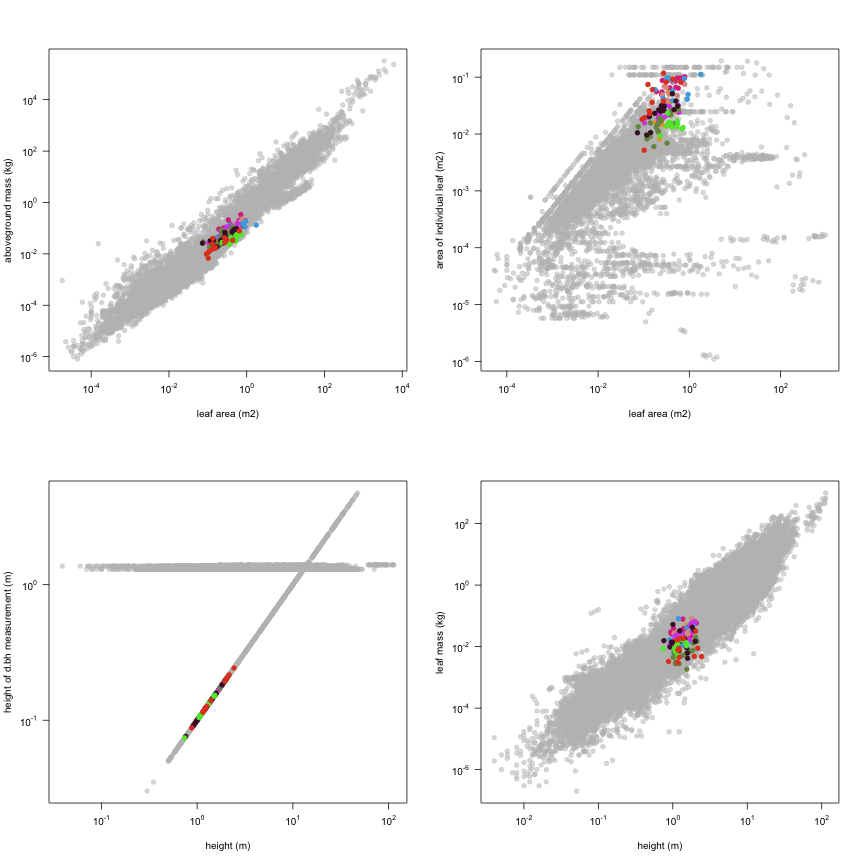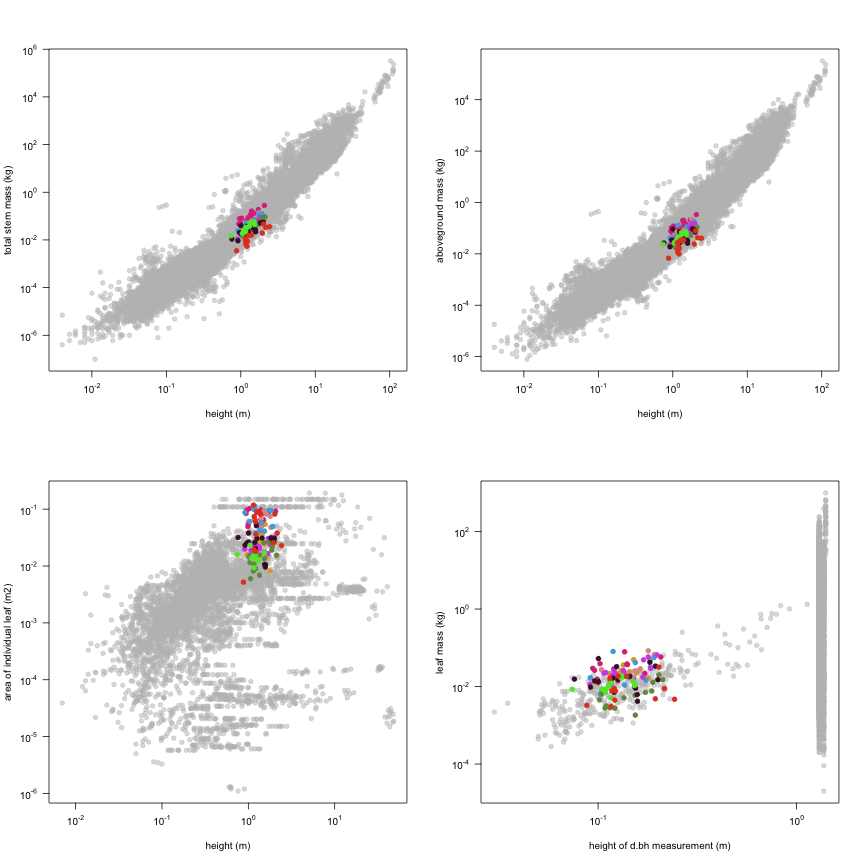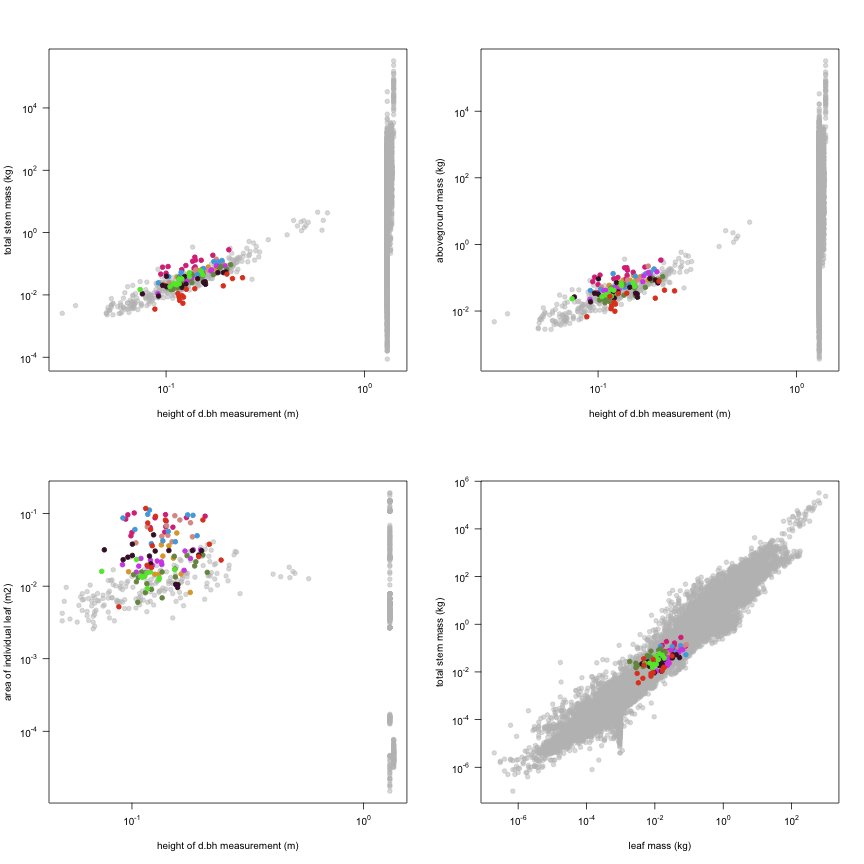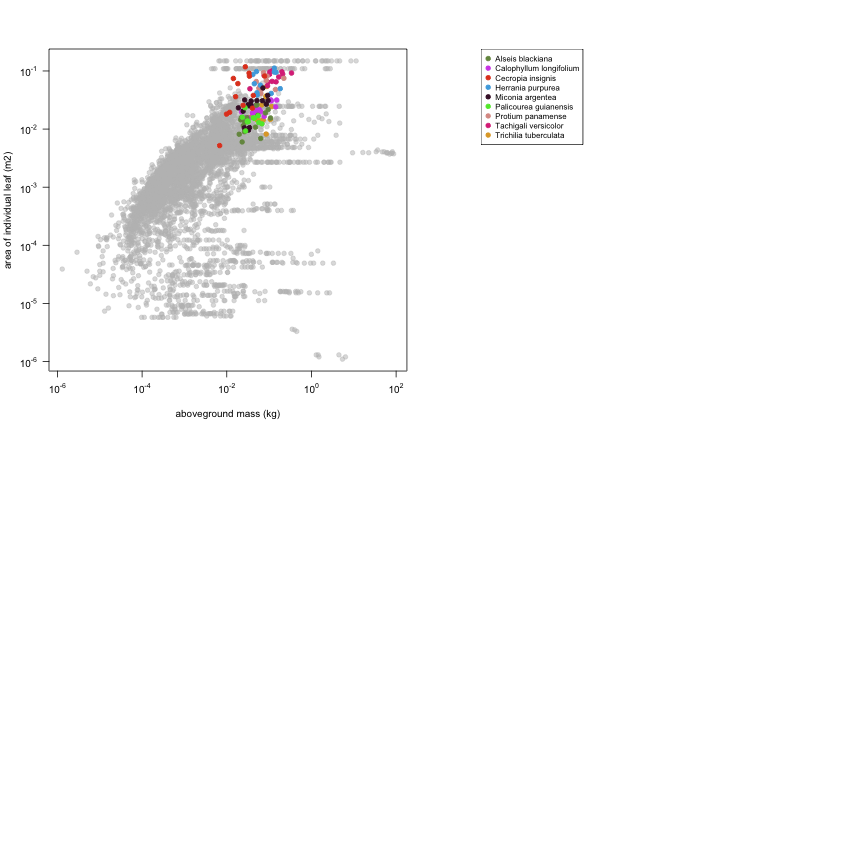-
Notifications
You must be signed in to change notification settings - Fork 19
King1994
Data contributor: David King
Email: [email protected]
Address:
- Forest Ecosystems and Society, Oregon State University, Corvallis, OR, USA
Citation: King DA (1994). 'Influence of light level on the growth and morphology of saplings in a Panamanian forest.' American Journal of Botany, 81(8), pp. 948-957.
DOI:
Abstract: Leaf spacing and aboveground growth were monitored in saplings of ten species in a range of light environments in a Panamanian lowland humid forest. One- to 2-m-tall individuals of the chosen species had intermediate to large leaves on stems with few or no branches. Saplings in high light environments grew faster in height and produced more biomass per unit leaf area than shaded saplings for all species. These growth responses involved morphological plasticity with greater extension per unit biomass increment increasing the height growth rate of gap-grown saplings and greater biomass allocation to leaves decreasing the whole plant light compensation point in shade. The relative performance of the species also varied across the light gradient and was related to differences in leaf lifespan and specific leaf mass. Light-demanding species grew as rapidly in shade as shade-tolerant species, but the shorter leaf lifespan of the former necessitates higher production rates to maintain a given leaf area, largely excluding light-demanders from shaded understory locations. Height growth rate was positively correlated with leaf spacing for each species, and differences between species in the height growth rate-internode length relationship were related to interspecific differences in specific leaf mass. Thus, sapling growth histories may be inferred from their morphologies.
The dataset includes records for 124 individuals from 9 species belonging to 8 family(ies), presenting 1 functional type(s), growing in 1 condition(s) within 1 major type(s) of habitat, with data included for the following variables:
| Variable | Label | Units | N | Min | Median | Max |
|---|---|---|---|---|---|---|
| latitude | Latitude | deg | 124 | 9.2 | 9.2 | 9.2 |
| longitude | Longitude | deg | 124 | -80 | -80 | -80 |
| a.lf | Leaf area | m2 | 124 | 0.073 | 0.3 | 1.8 |
| h.t | Height | m | 124 | 0.74 | 1.3 | 2.4 |
| h.bh | Height of d.bh measurement | m | 124 | 0.074 | 0.13 | 0.24 |
| m.lf | Leaf mass | kg | 124 | 0.0018 | 0.017 | 0.083 |
| m.st | Total stem mass | kg | 124 | 0.0035 | 0.038 | 0.28 |
| m.so | Aboveground mass | kg | 124 | 0.0068 | 0.052 | 0.34 |
| a.ilf | Area of individual leaf | m2 | 120 | 0.0052 | 0.026 | 0.12 |
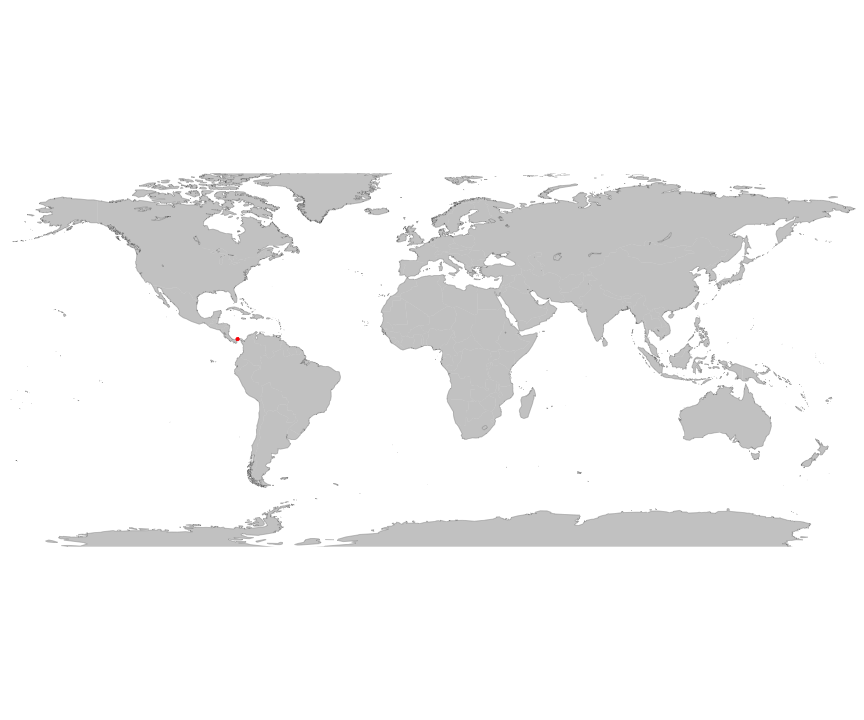
And locally within the country:
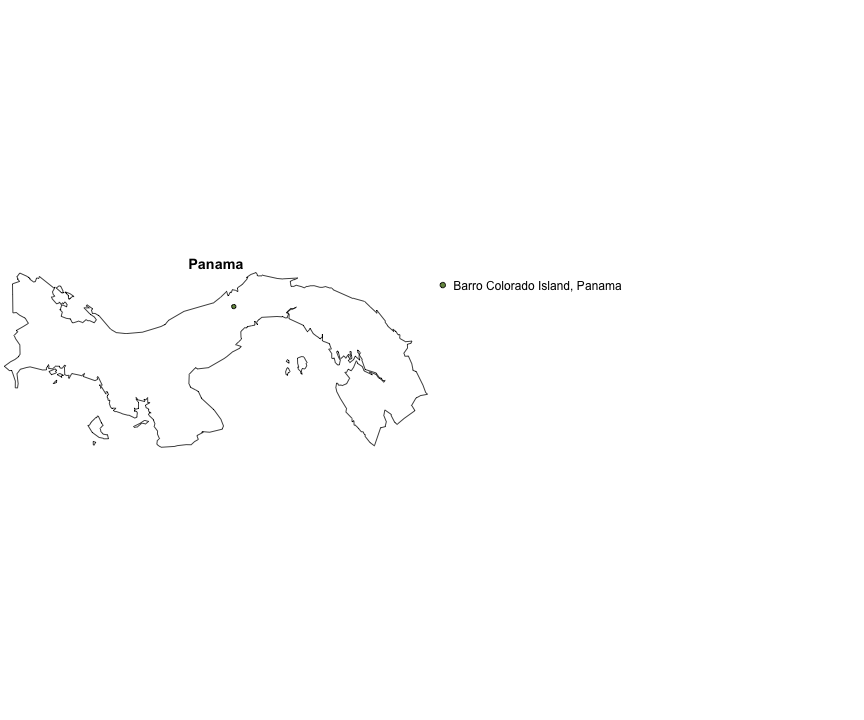
The sites sampled are:
| Location | Longitude | Latitude | Vegetation |
|---|---|---|---|
| Barro Colorado Island, Panama | -79.85 | 9.15 | Tropical rainforest |
The growing conditions of sampled plants was:
| Location | growingCondition |
|---|---|
| Barro Colorado Island, Panama | field wild |
| Species | Family | Pft |
|---|---|---|
| Trichilia tuberculata | Meliaceae | evergreen angiosperm |
| Tachigali versicolor | Fabaceae | evergreen angiosperm |
| Protium panamense | Burseraceae | evergreen angiosperm |
| Herrania purpurea | Sterculaceae | evergreen angiosperm |
| Calophyllum longifolium | Clusiaceae | evergreen angiosperm |
| Alseis blackiana | Rubiaceae | evergreen angiosperm |
| Miconia argentea | Melastomataceae | evergreen angiosperm |
| Palicourea guianensis | Rubiaceae | evergreen angiosperm |
| Cecropia insignis | Cecropiaceae | evergreen angiosperm |
Sampling strategy:
Leaf area: Leaf bade length x width (spanning pinnae of compound leaves) multiplied by species specific conversion factors (near to 2/3 for most simple leaved species). 1.42 cm diameter discs punched from mature leaves (avoiding major veins) were used for determination of leaf mass per area.
Stem cross sectional area: Measured at 4 or 5 non-standardized regularly spaced heights at smooth sections of the stem. Caliper-measured diameters in two perpendicular directions x pi/4 yields the areas, which were used only to calculate stem volumes.
Height: Height from stem base to highest stem tip, usually that of the central stem.
Crown area: Width in two perpendicular directions x pi/4
Biomass: Estimated from plant part dimensional measurements to get volume (stem, and branches if present), or leaf area, which were in turn multiplied by species-specific measurements of stem density or leaf mass per unt area, respectively.
Growth environment: Understory or gaps in tropical forests
Year collected: 1990-1991
This is how the study King1994 fits in the entire dataset (grey). each colour represents a species. A legend of species names with colours is included at the end for reports with 1 < n < 20 species.
